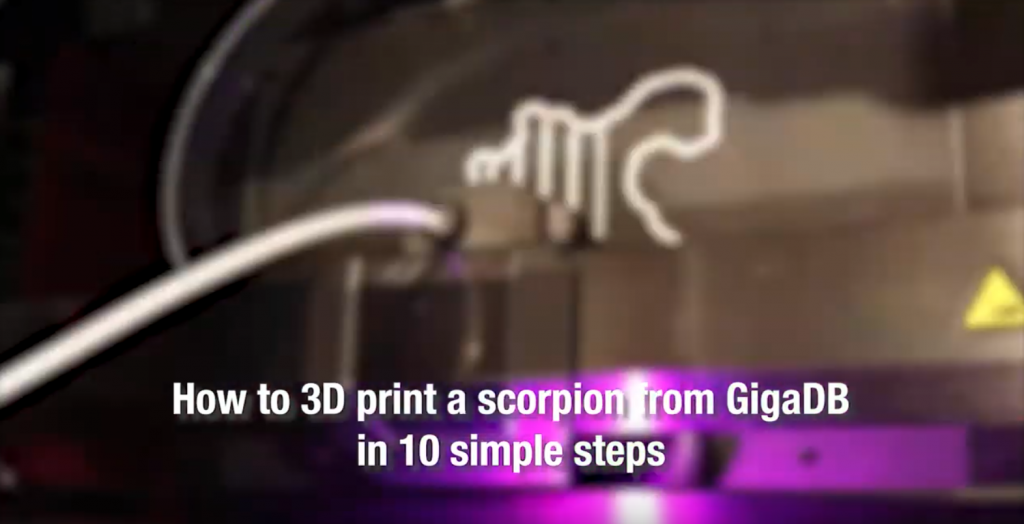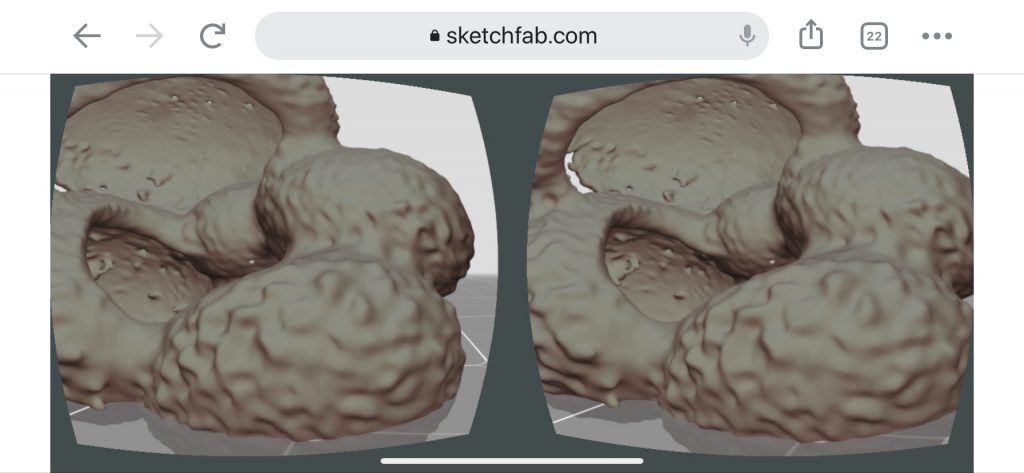A step-by-step guide to 3D print a scientific publication.

Open Data in the Third Dimension
Data are not just ephemeral units of magnetisation sitting on computer hard drives. The linking of the word to storable computer information only goes back to the mid-20th century, but the use of the latin word data in English goes back to at least the 17th Century. In the 21st century its usage and how you can interact with it is changing even further, with 3D printing or additive manufacturing, turning digital models into physical, solid objects at the touch of a button. Imaging data has been a big part of GigaScience’s data-driven remit and scope since our launch in 2012, and in 2014 we published our first micro-CT datasets, scanned 3D models of earthworm museum specimens allowing non-destructive real-time dissection and study (see GigaBlog). Since this first publication we’ve published a digital-menagerie of micro-CT datasets of “cyber-centipedes”, pregnant brittle stars, Obama flatworms, amongst many others.
Starting with these 3D datasets our first step into the world of interaction has been with 3D modelling, initially embedding Sketchfab plugins in our GigaDB entries and later into the actual articles. This allows readers to rotate, zoom and view the 3D models in an easy-to-use browser. And a Sketchfab page collecting together all of these datasets in one place.
Having imaging data experts in our curation team has enabled us to take things to the next level of interaction, converting these files into formats such as STL that can be printed via 3D printers. These can be downloaded via GigaDB, and we are also promoting the use of research data for the 3D printing community, depositing our published 3D models in our portal the thingiverse repository. This makes it discoverable by people with printers, and also taps into a big social network of people sharing back their “makes” and “remixes” (including this unexpected mashup utilizing our 3D snake-fangs data). Furthermore these types of datasets can also be viewed in virtual reality headsets, further increasing the reuse potential.

Our new GigaByte journal has taken this level of interaction to a new level, with sketchfab windows embedded in tables, alongside instructional videos to provide additional context. Our first paper showcasing this approach is a nice example of what can barriers can be broken using 3D printing, presenting bird skulls, scorpions and other creepy-crawlies that have been digitised from collections at the National Museum in Bloemfontein, South Africa. Creating enlarged versions of these in the public domain that can be printed as museum exhibits for the visually impaired that can be shared across the world.
In describing the data production and re-use potential, the digitised versions of these interactive museum exhibits will be equally interactive for GigaByte readers, with links to downloadable 3D models in our GigaDB repository and in an embedded Sketchfab window in the article that allows the reader to inspect the model and interact with it through their browser.
A second paper demonstrates the utility of this data in climate change research, with microCT scans of fossilised planktonic shells providing useful data to understand changes in atmospheric CO2. This paper embeds the sketchfab windows in a table, and has additional embedded interactive features such as browseable maps and a video overview. This interaction providing greater insight and trust from the readers, which is particularly important in an area of research such as climate change that has to tackle with conspiracy theories and skepticism from some.
To promote re-use of these types of data we have produced a video guide on how to 3D print a scorpion from GigaDB in 10 simple steps. From downloading the data, to sharing the end product back again. You can watch this 3D printing #101 expertly carried out by Angela Zarrilli, and the 3D models are available in thingiverse and GigaDB. The data is released under a CC0 public domain waiver, but we would kindly ask people printing these to please post back any makes so we and the data producers can see the amazing things being done with this data. And we’d like to thank the authors for working with us and sharing their amazing datasets in this way.
Check out our 3D imaging collections here:
GigaScience thingiverse page: https://www.thingiverse.com/gigascience
GigaScience Sketchfab: https://sketchfab.com/GigaDB
Further Reading
Anton Du Plessis, Johan Els, Stephan Le Roux, Muofhe Tshibalanganda, Toni Pretorius, Data for 3D printing enlarged museum specimens for the visually impaired, Gigabyte, 1, 2020 https://doi.org/10.46471/gigabyte.3
Stergios D. Zarkogiannis, Vincent Fernandez, Mervyn Greaves, P. Graham Mortyn, George Kontakiotis, Assimina Antonarakou, X-ray tomographic data of planktonic foraminifera species Globigerina bulloides from the Eastern Tropical Atlantic across Termination II, Gigabyte, 1, 2020 https://doi.org/10.46471/gigabyte.5